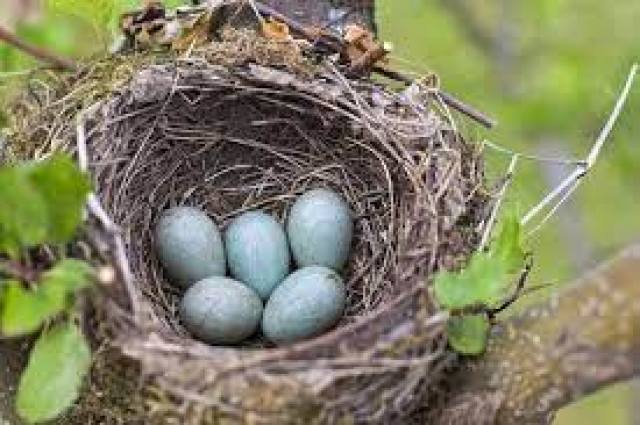A nest is a structure built for certain animals to hold eggs, offspring, and, oftentimes, the animal itself. Although nests are most closely associated with birds, members of all classes of vertebrates and some invertebrates construct nests. They may be composed of organic material such as twigs, grass, and leaves, or may be a simple depression in the ground, or a hole in a rock, tree, or building. Human-made materials, such as string, plastic, cloth, or paper, may also be used. Nests can be found in all types of habitat.
Nest building is often driven by a biological urge in pregnant animals to protect one's offspring known as the nesting instinct. Animals build nests to protect their eggs, their offspring, or themselves from danger. The simplest nest structures are adapted to hide eggs from predators, shield them from the sun or other environmental factors, or simply keep them from being scattered in ocean currents. In some cases, nests also help provide safety in numbers for egg-laying animals. Many nest builders provide parental care to their young, while others simply lay their eggs and leave.
In general, birds are the most skilled nest builders, although not all species of birds build nests, some laying their eggs directly onto rock ledges or bare soil without first modifying the area.

